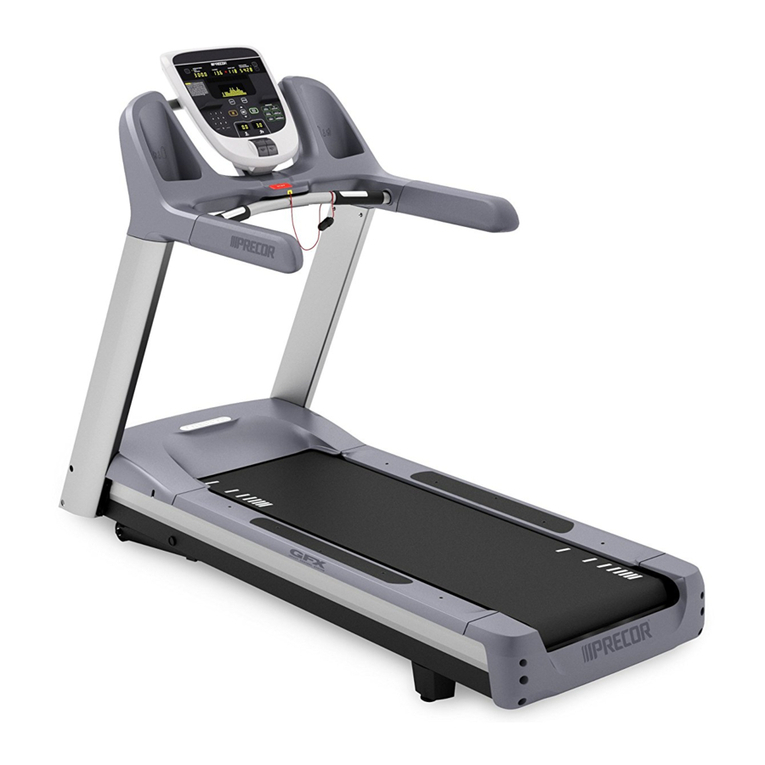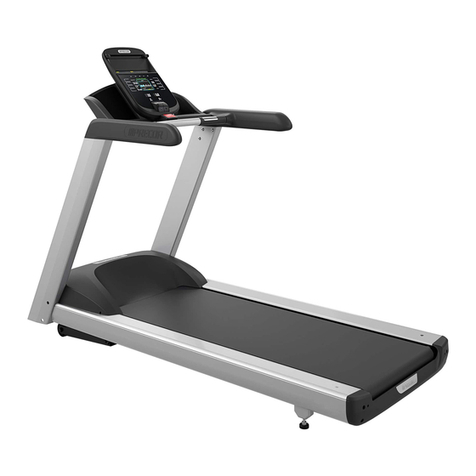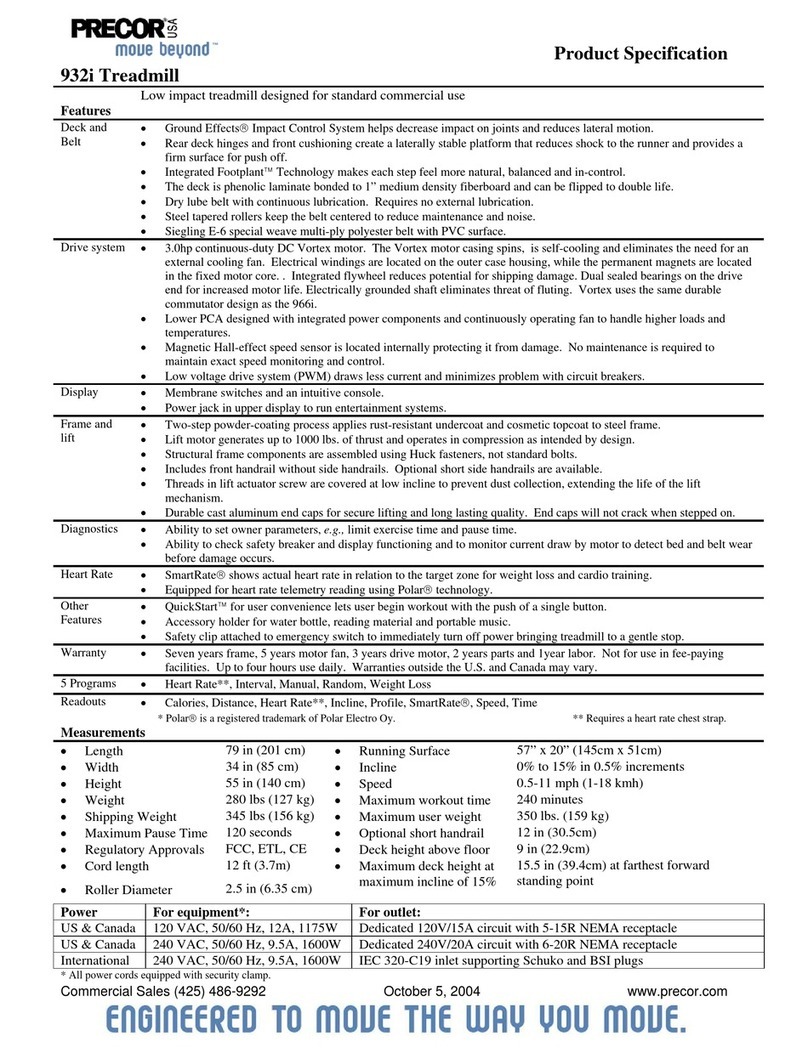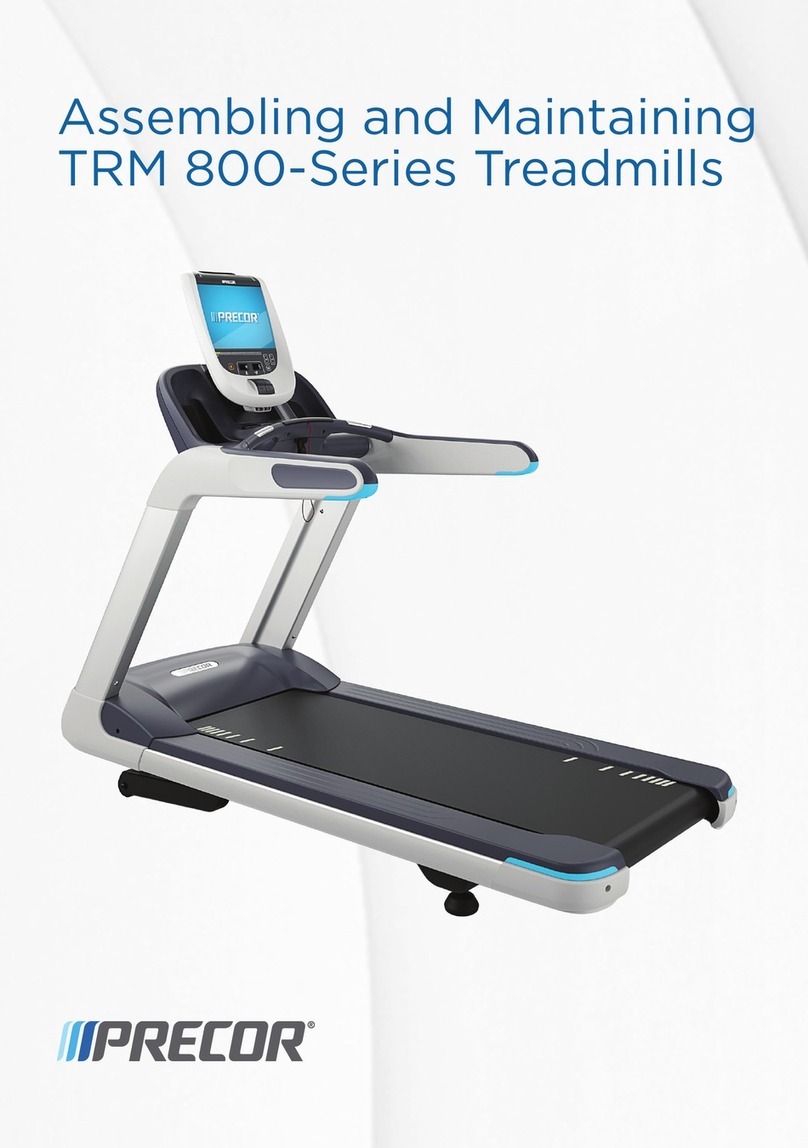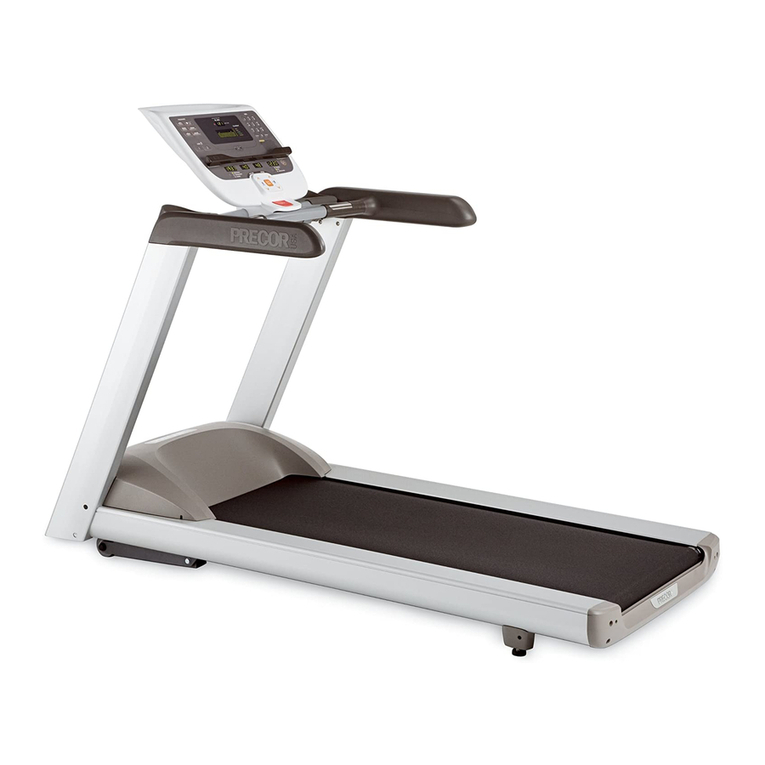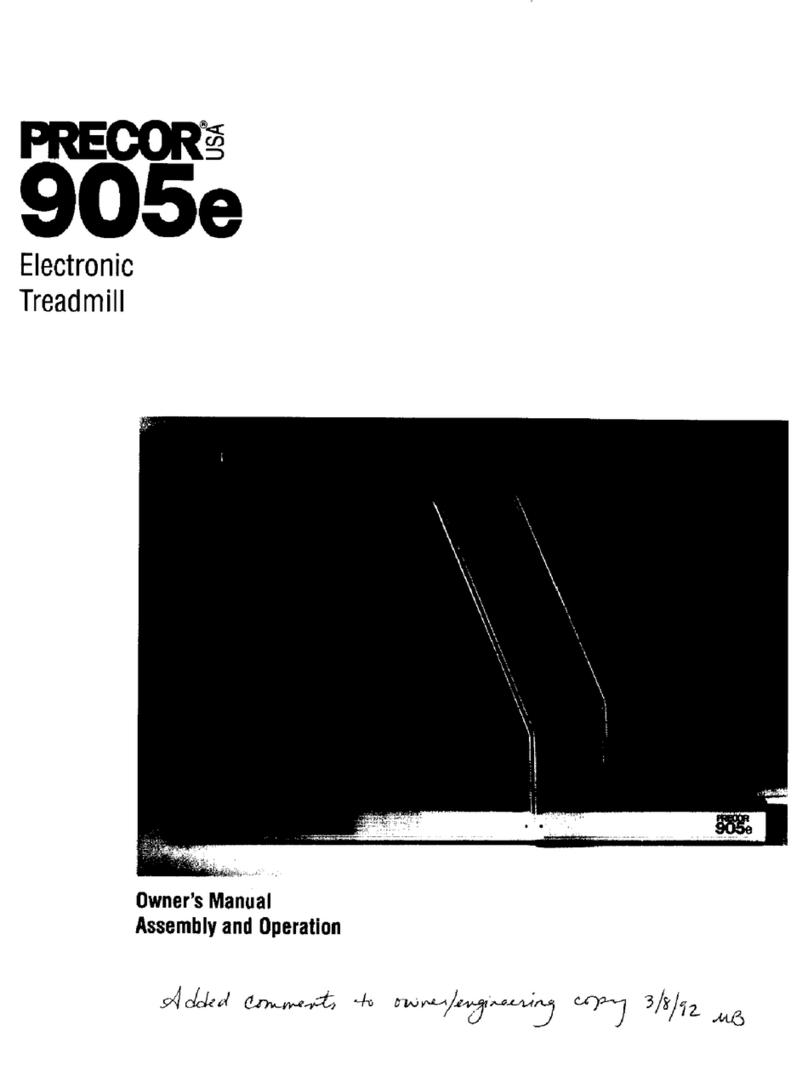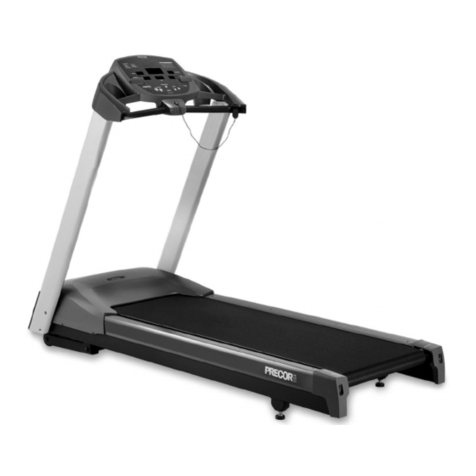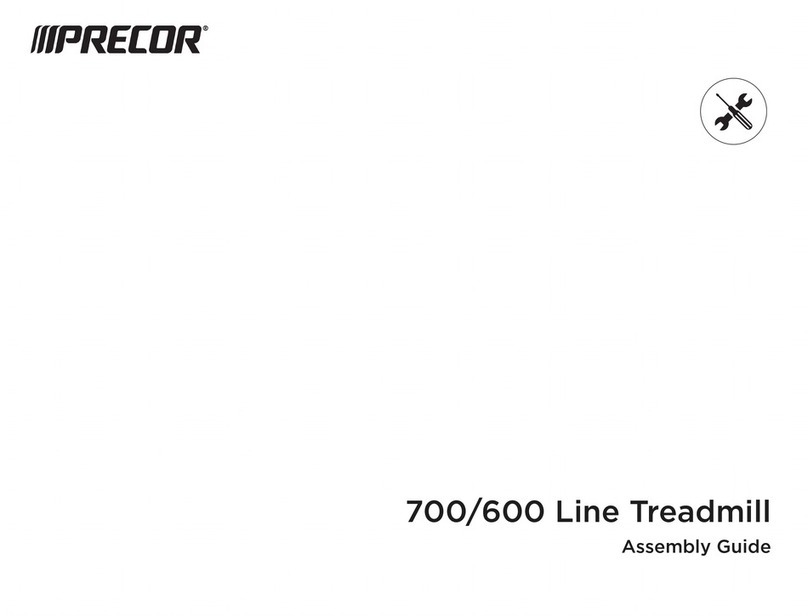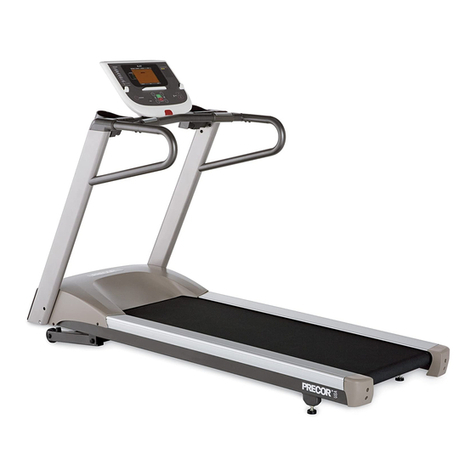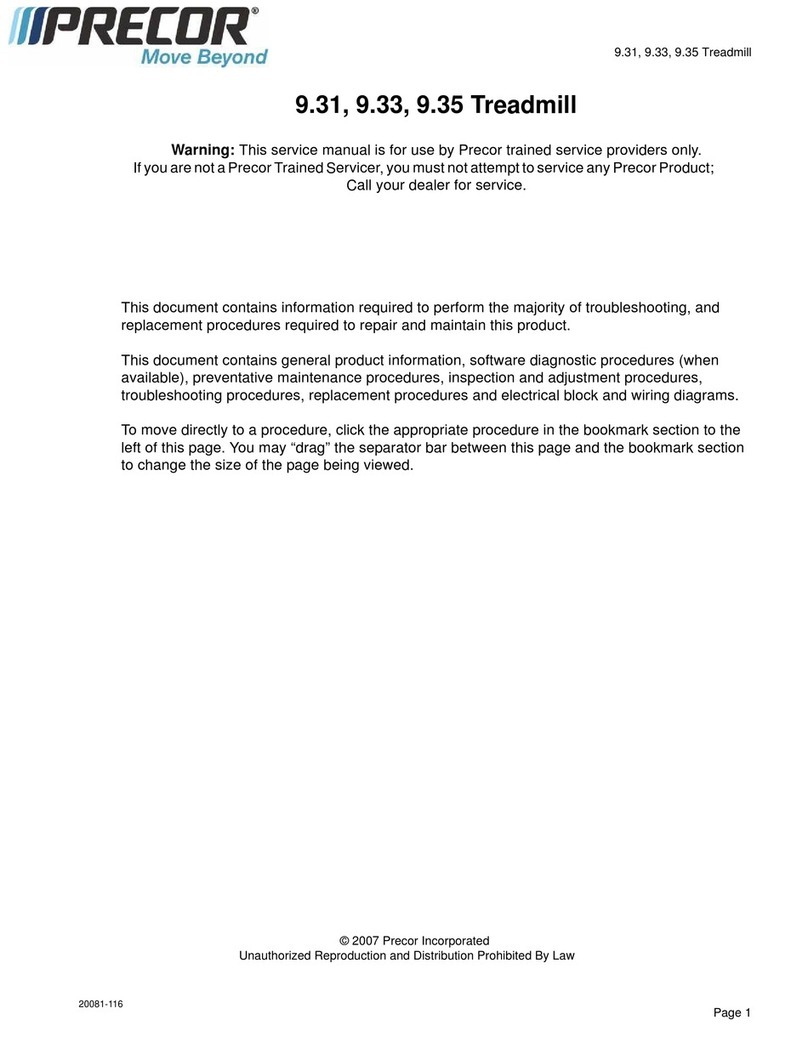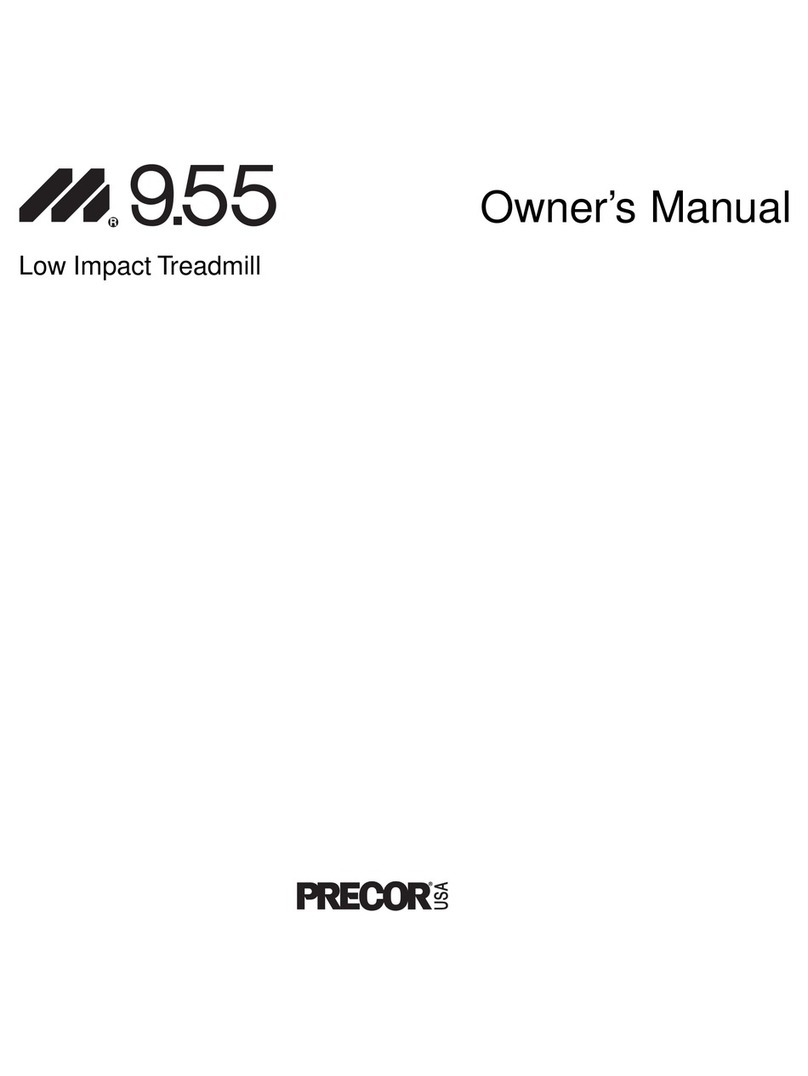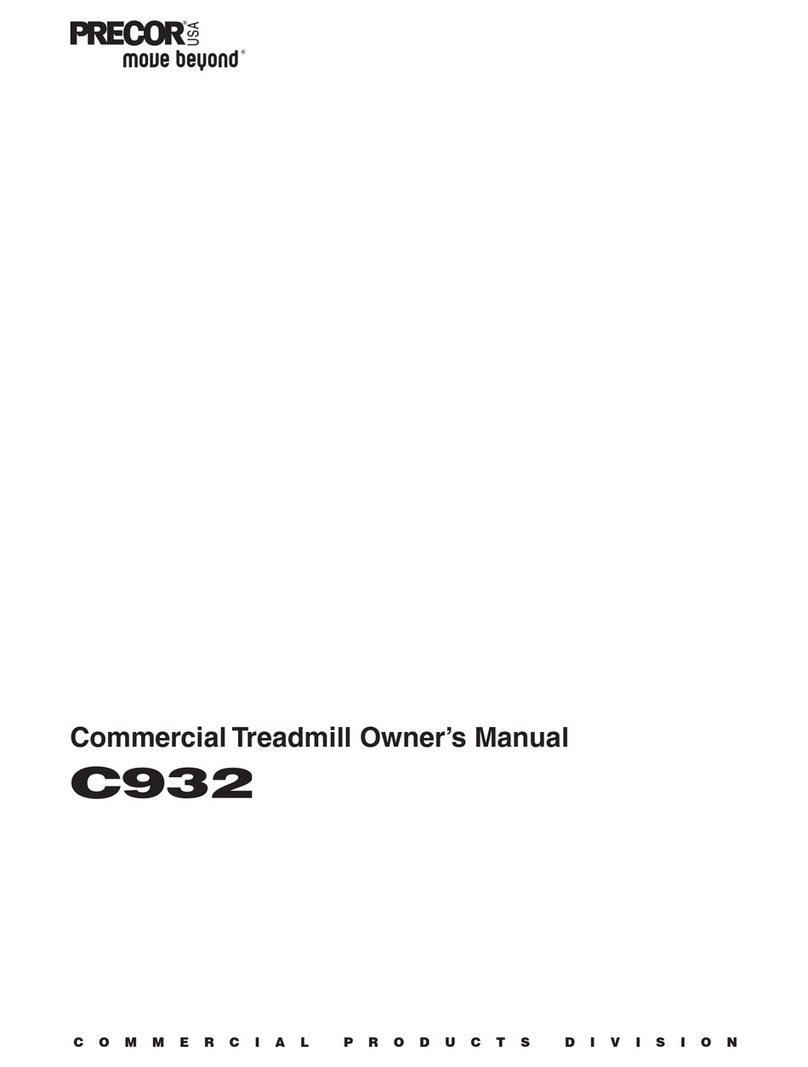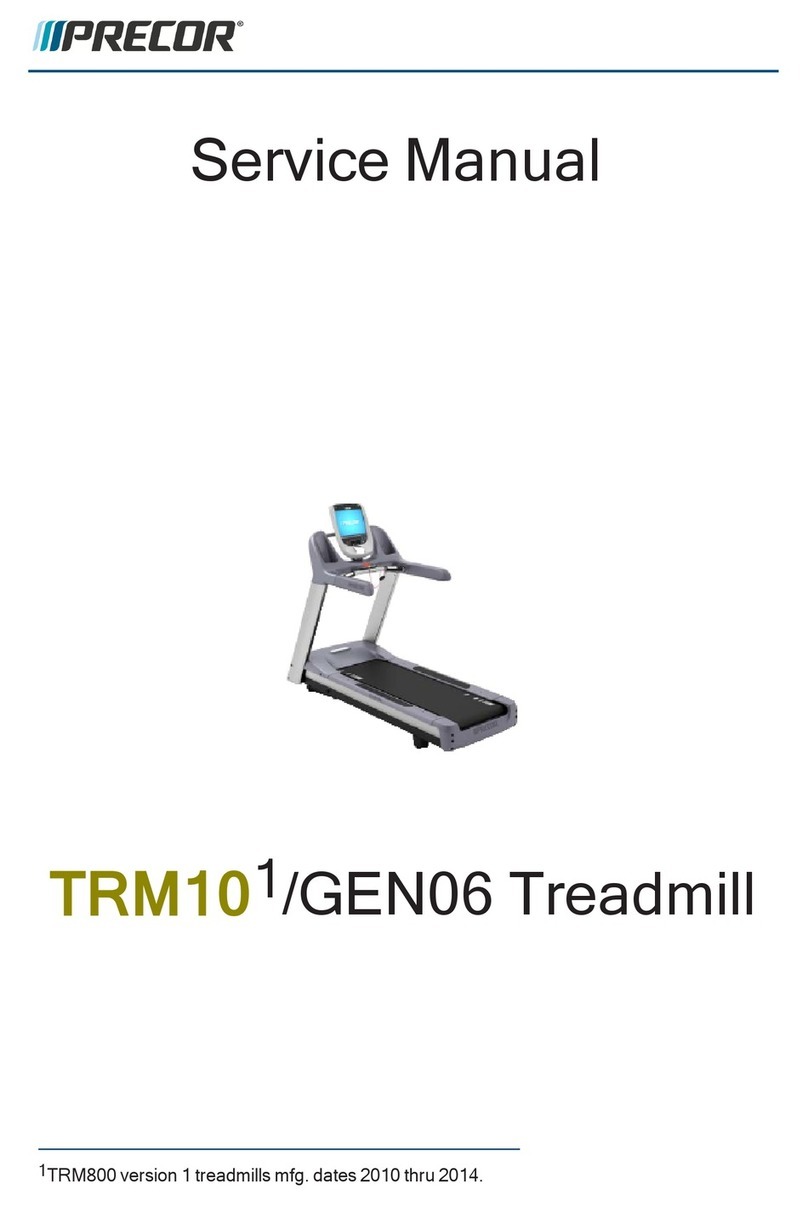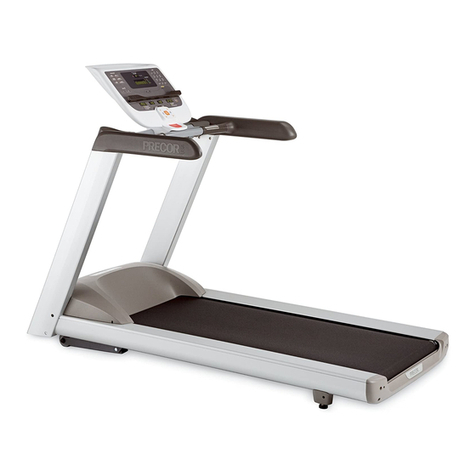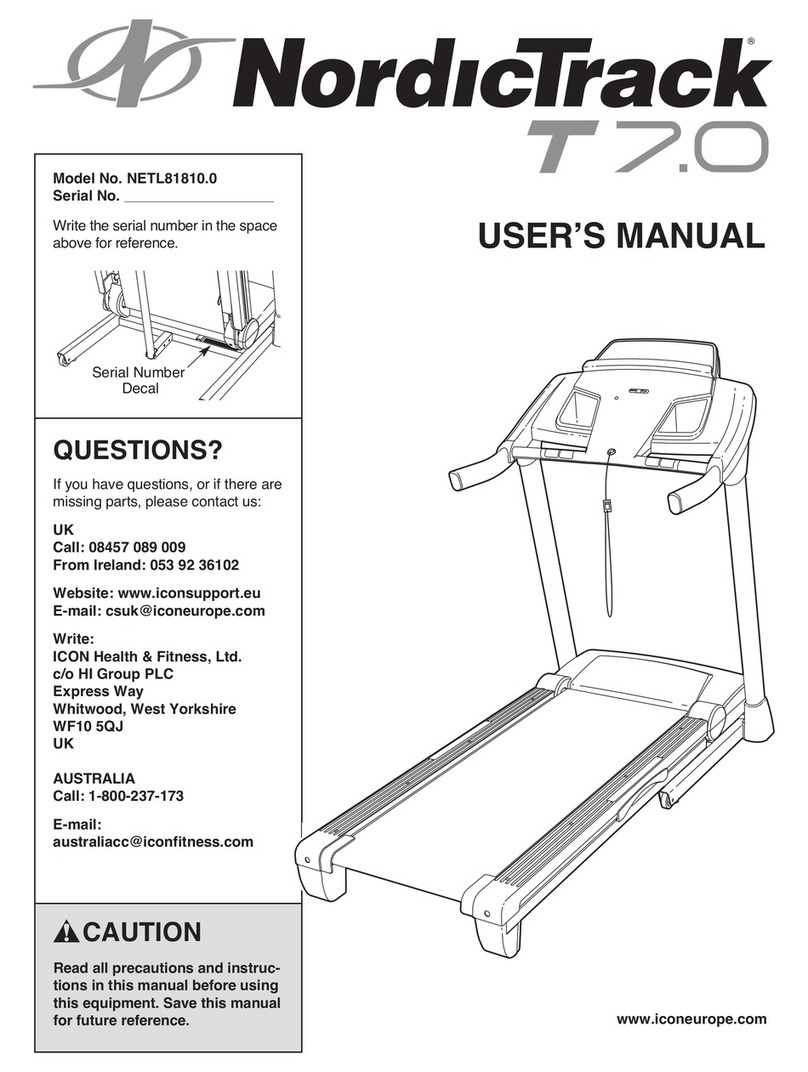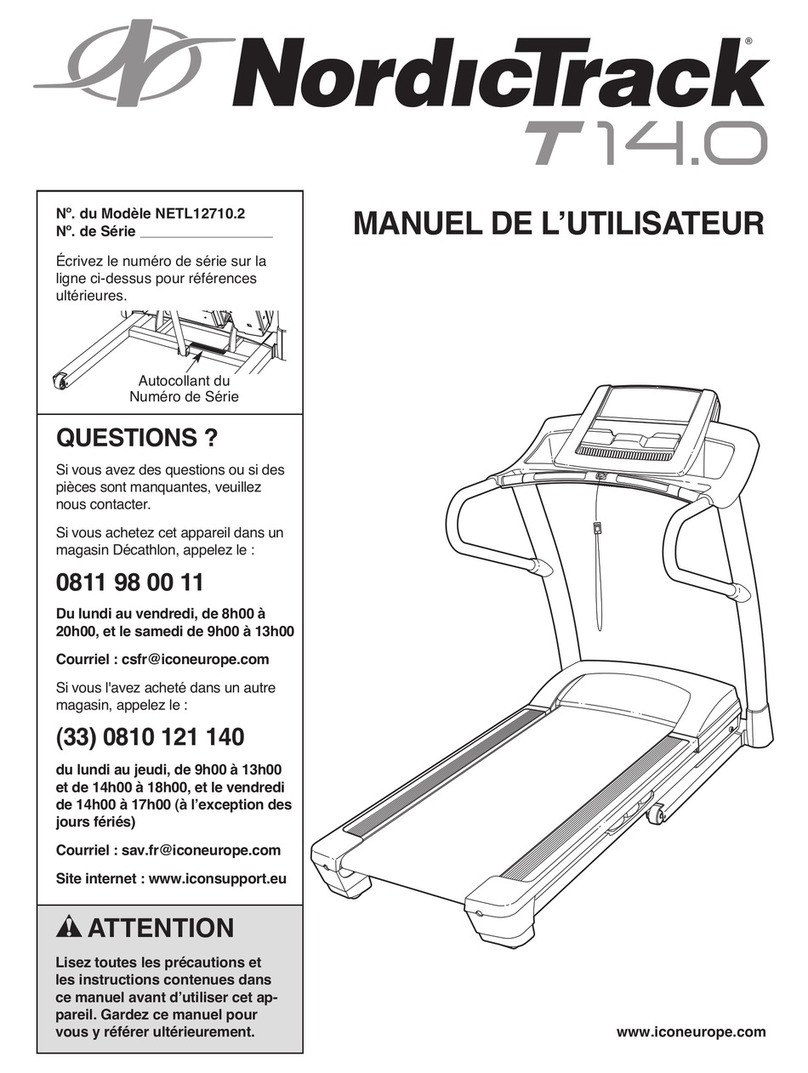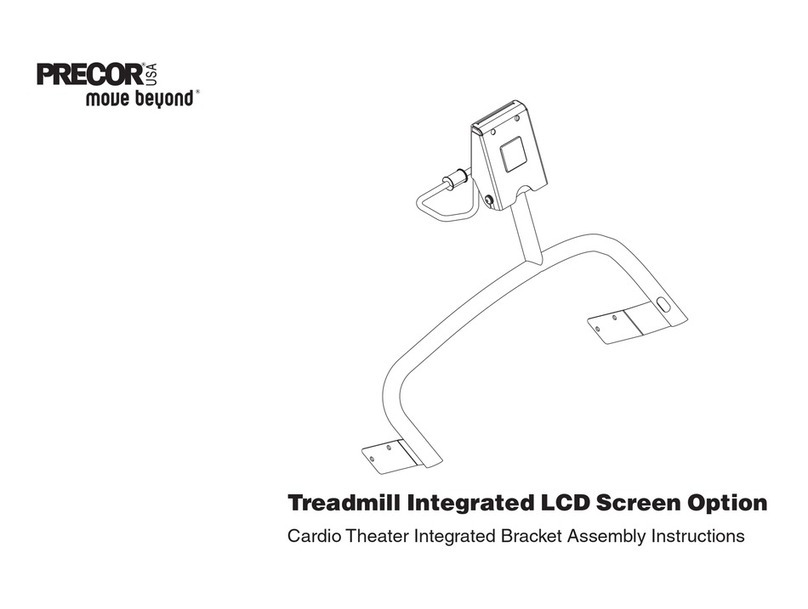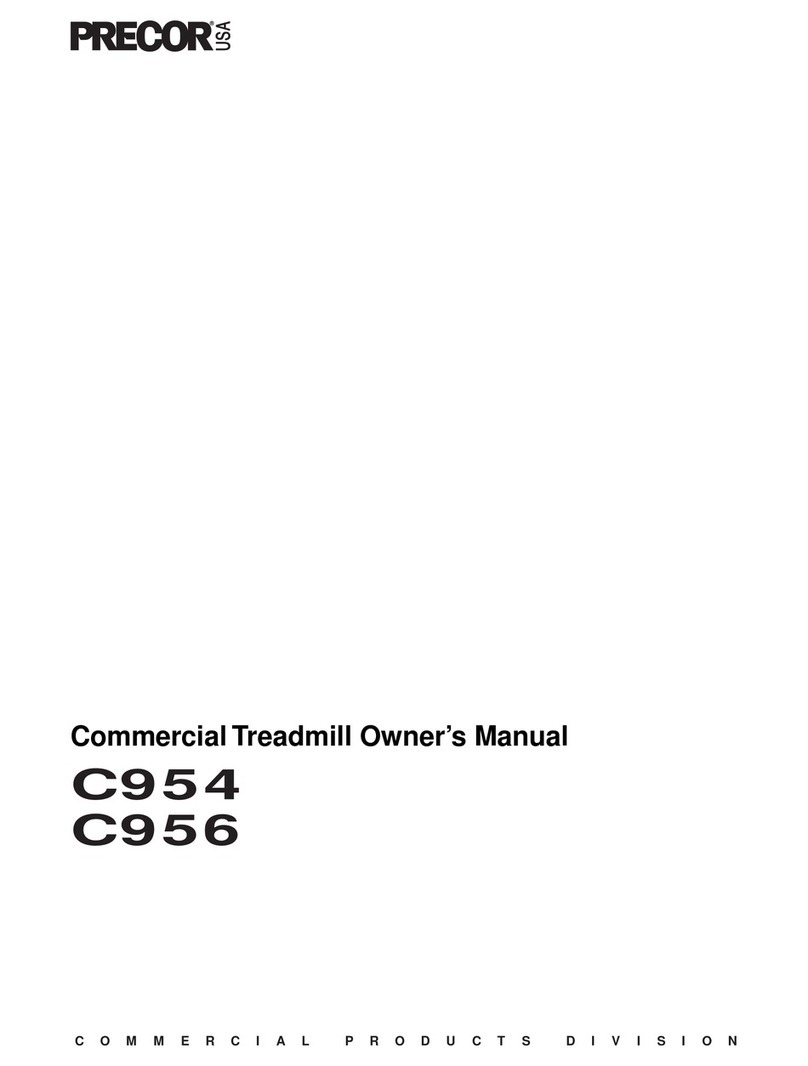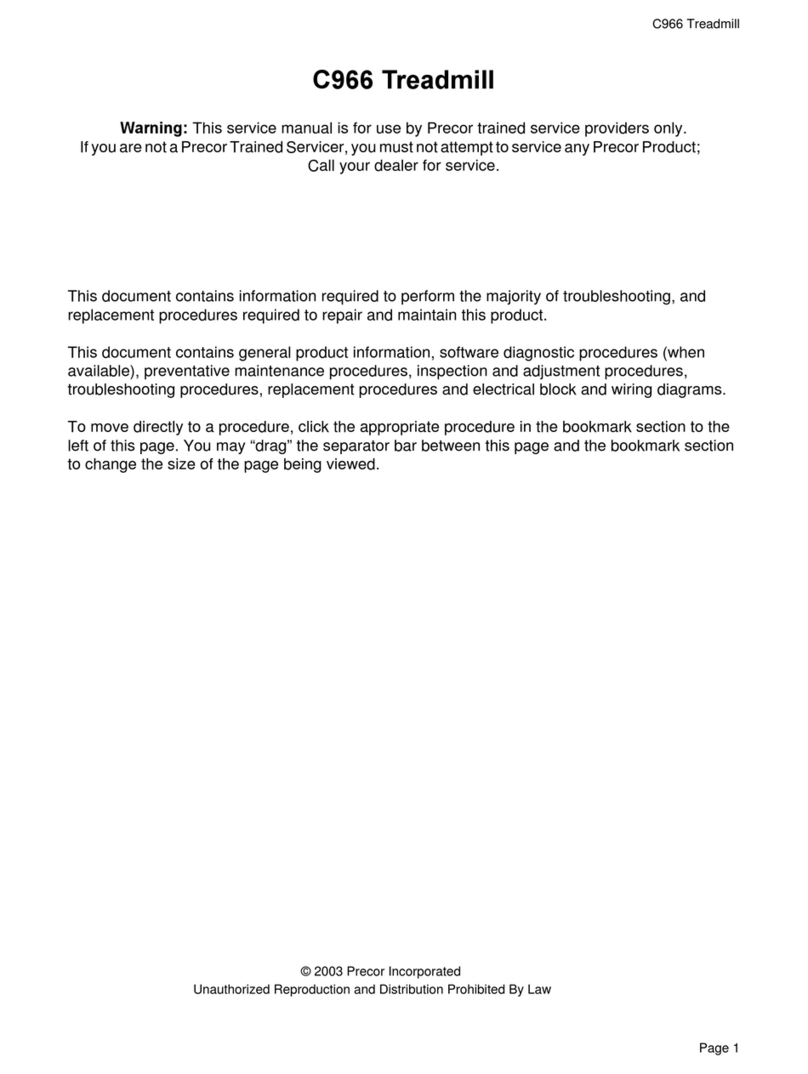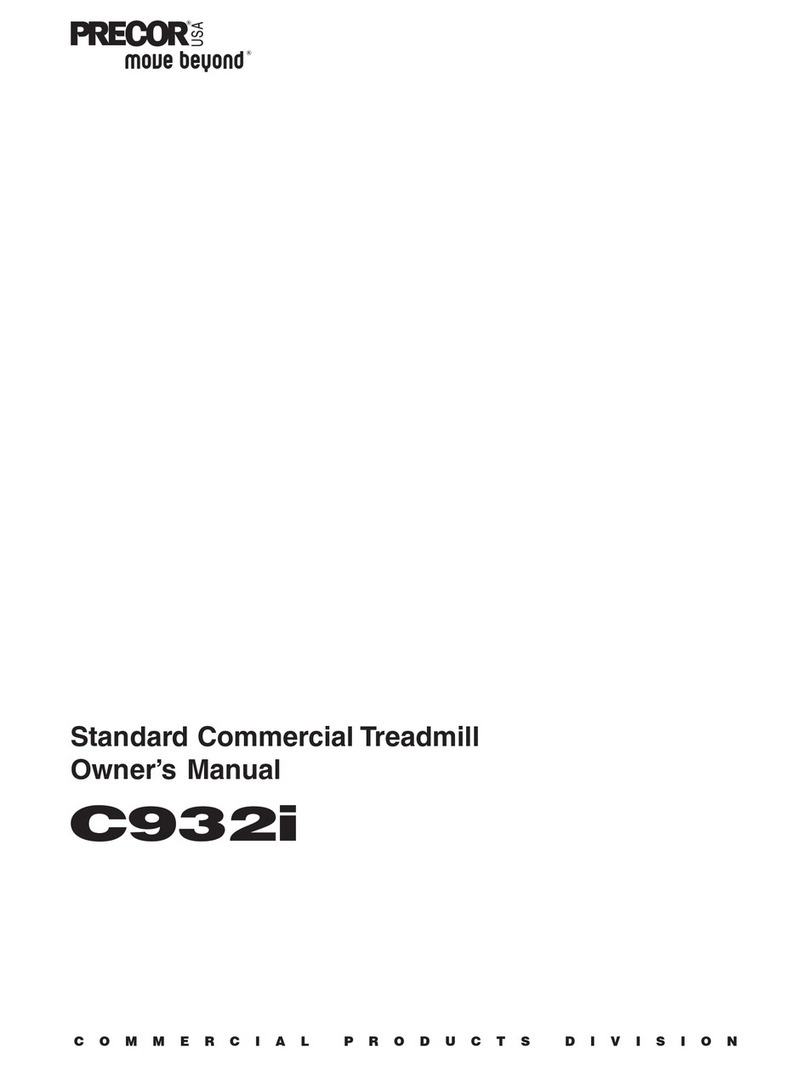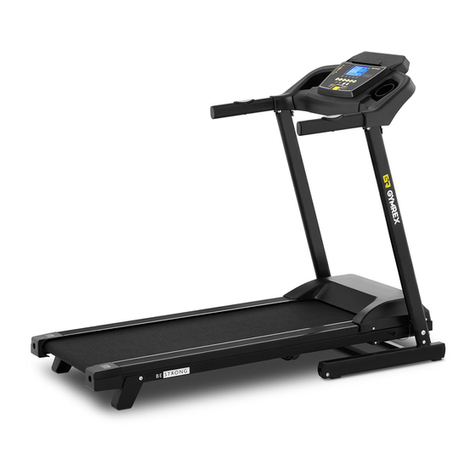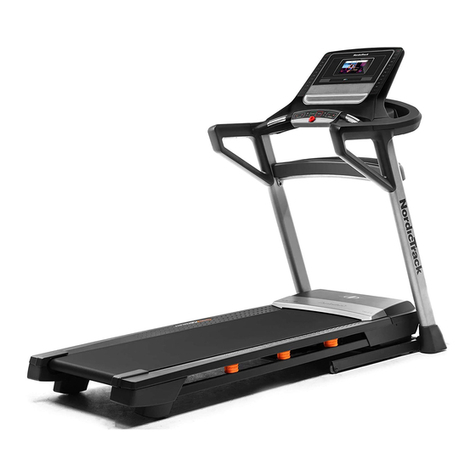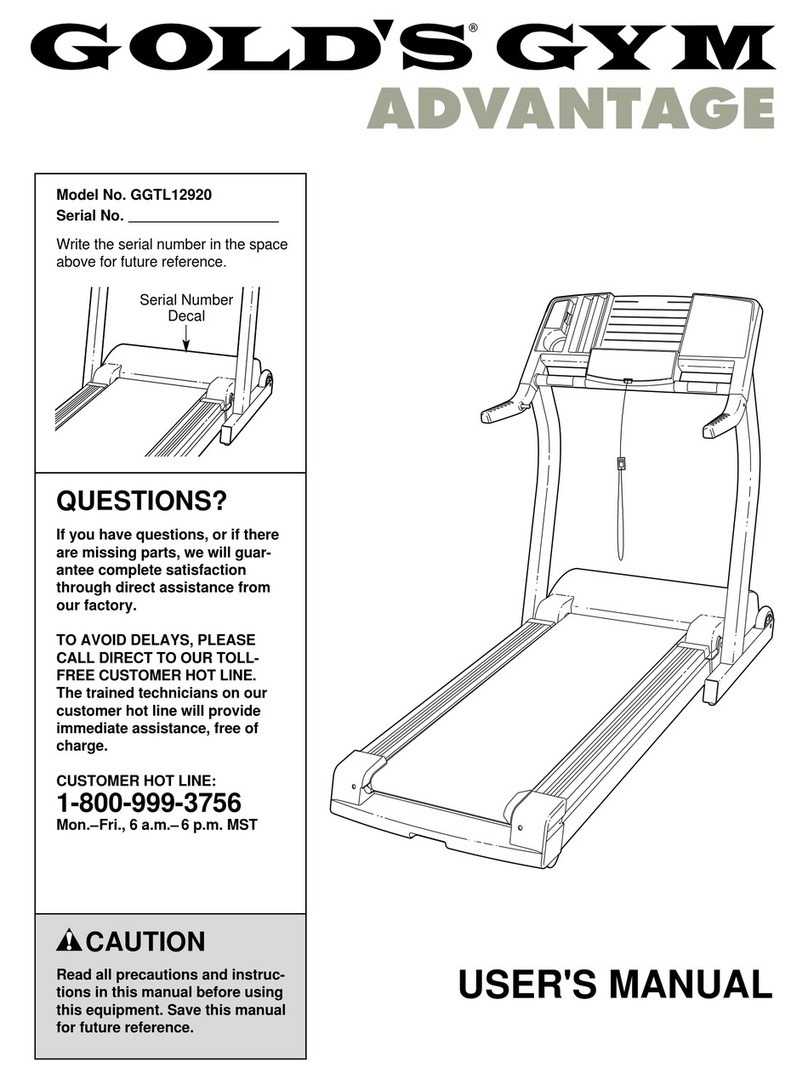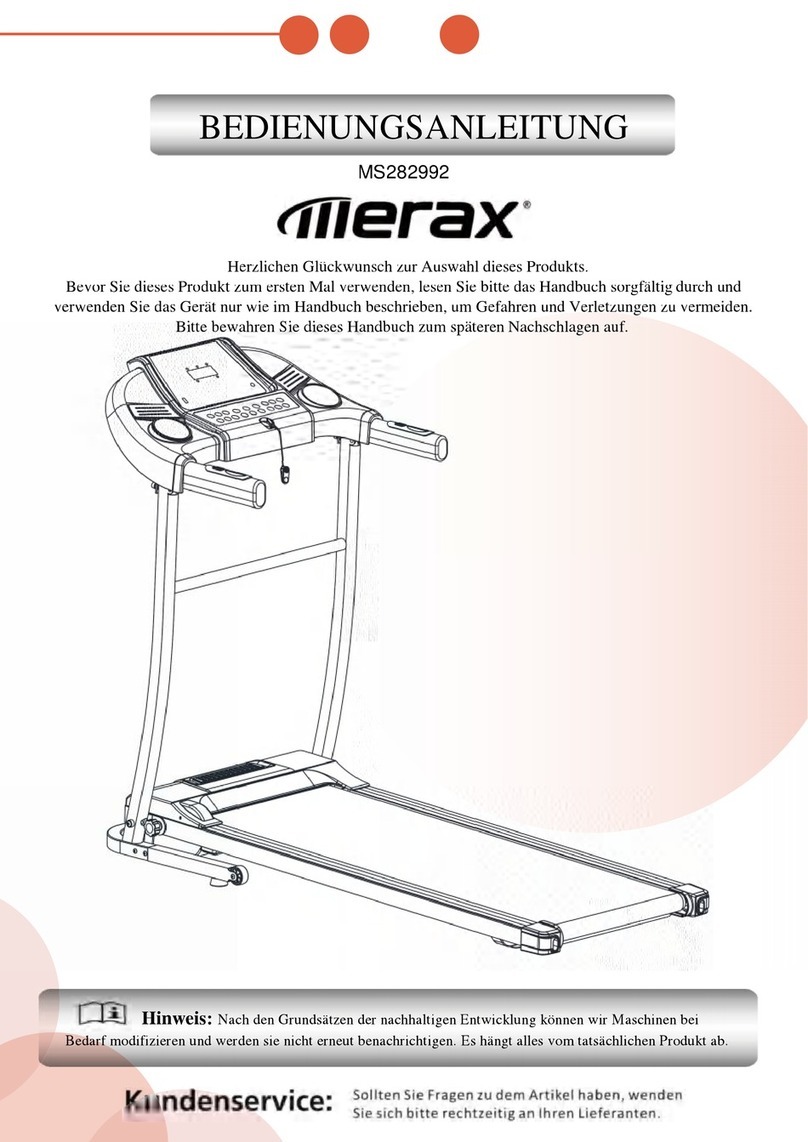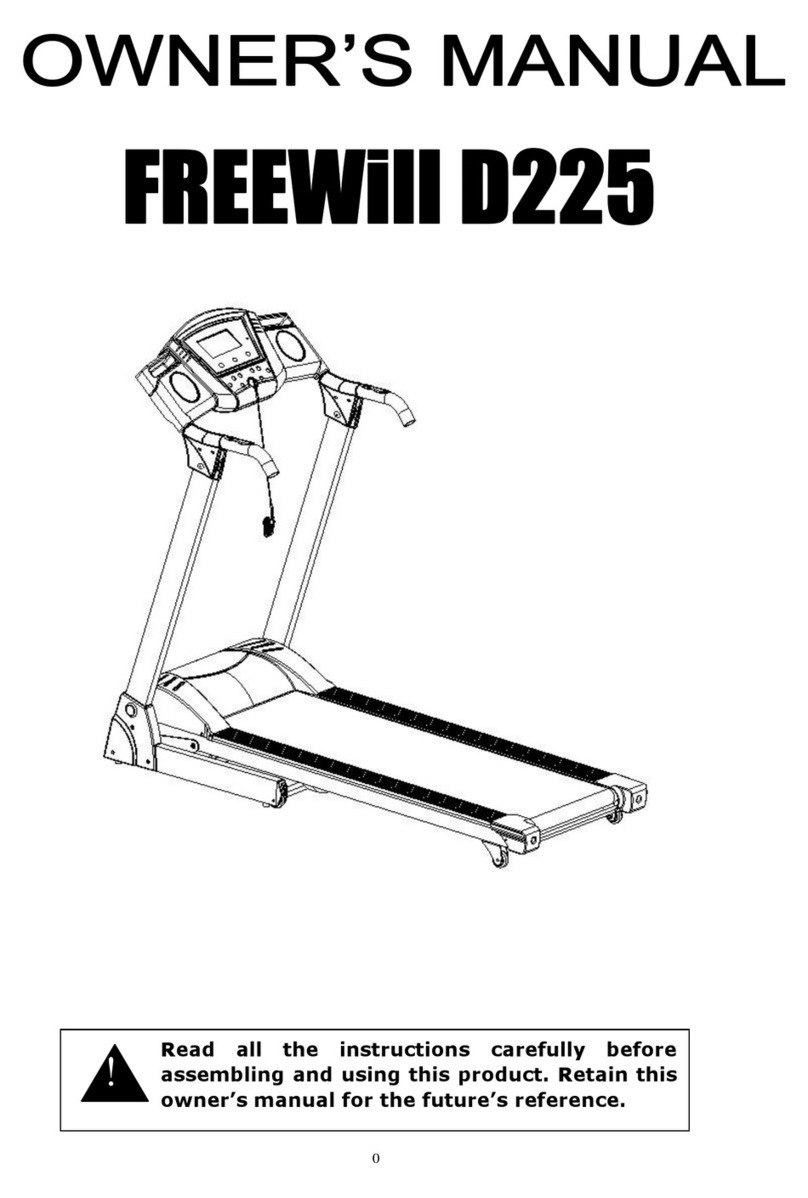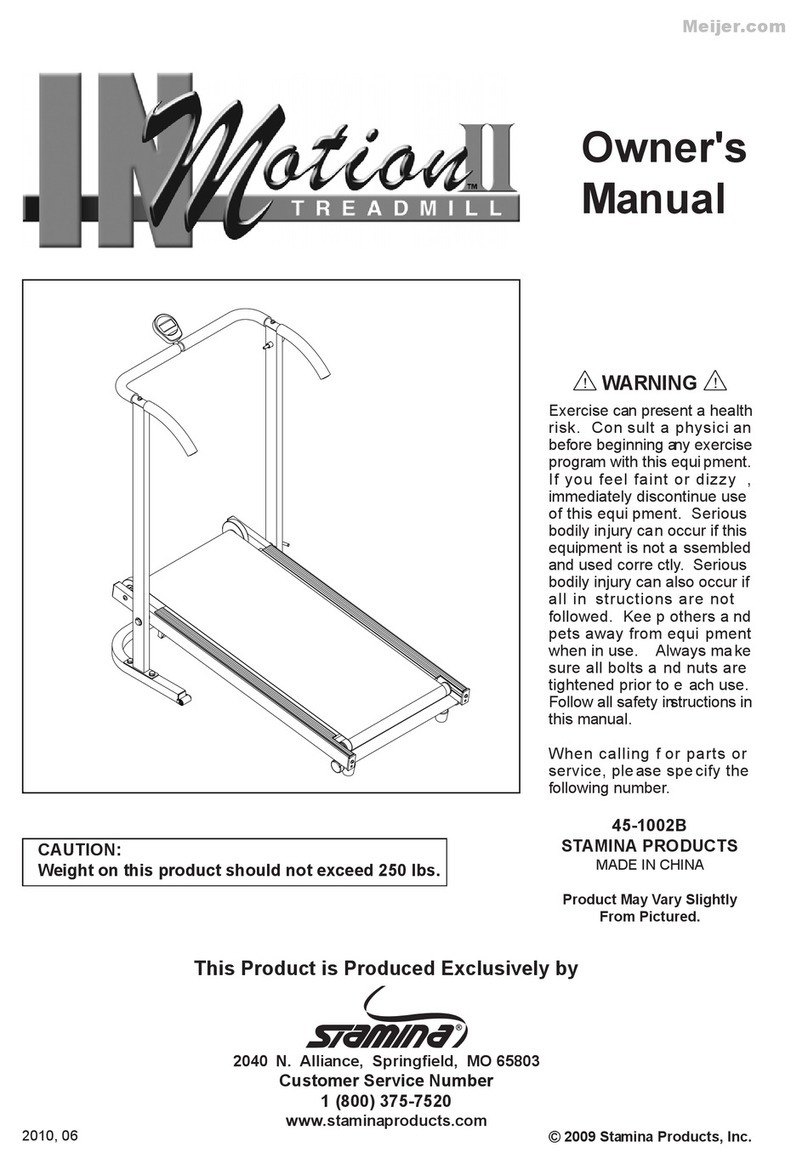
page 2
Total Body
Treadmill
Thank you for purchasing one of the innovative additions to the famous
Precor treadmill line: the 904 Total Body Treadmill. Smooth, manual operation
and dual-action handrails provide a safe and effective cardiovascular and “total
body” workout.
Before using the 904 Total Body Treadmill, we urge you to familiarize yourself
with the entire Owner’s Manual. Whether you are a beginner or exercise on
treadmills regularly, understanding this manual will help you use the 904
treadmill safely and successfully.
Safety Information
Please review and observe the following safety guidelines:
• Read the Owner’s Manual and follow all instructions.
• Assemble and operate the 904 treadmill on a solid, level surface. A low-
pile carpet is best. If the treadmill is placed on a hardwood floor or a deep-
pile carpet, place a piece of heavy cardboard, plywood, or other flat
surface under the unit to protect the floor or carpet. Locate the treadmill a
few feet from walls or furniture. Keep the area behind the treadmill clear.
• Do not allow children on or near the 904 treadmill. Do not leave children
unsupervised around the treadmill.
• Check the 904 treadmill before each use. Be sure all assembly bolts are
tightened and secure. Do not use the treadmill if it is not completely
assembled or is damaged in any way.
• Keep hands away from the flywheel and other moving parts.
• Wear proper exercise clothing and shoes for your workout—no loose
clothing. Do not wear shoes with heels or leather soles. Check the soles of
your shoes and remove any embedded stones. Tie long hair back.
• Use care when getting on or off the 904 treadmill. If you are unfamiliar
with the use of the treadmill, secure the handrails into an upright position
by inserting the locking pins in place prior to walking or running on the
treadmill. Refer to the
Assembly Instructions
.
• Keep your body and head facing forward. Do not attempt to turn around
on the treadmill when the belt is moving.
• Do not rock the unit. Do not stand or climb on the handrails. Never place
liquids on any part of the treadmill.
• Do not overexert yourself or work to exhaustion.
• Stop your workout immediately if you feel any pain or abnormal
symptoms, and consult your physician.
Precor manual treadmills are designed for the enjoyment of the dedicated
walker and runner. By following the above precautions and using good
common sense, you will have many safe and pleasurable hours of healthful
exercise with your Precor treadmill.
R
USA
CAUTION: Before beginning
any fitness program, you
should have a complete
physical examination by your
physician.
